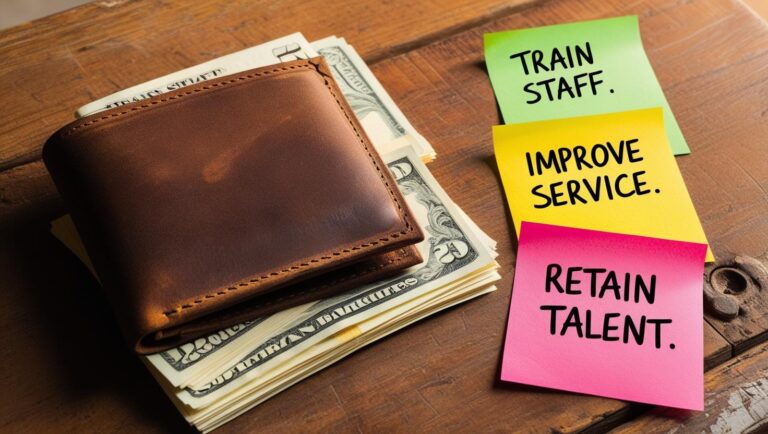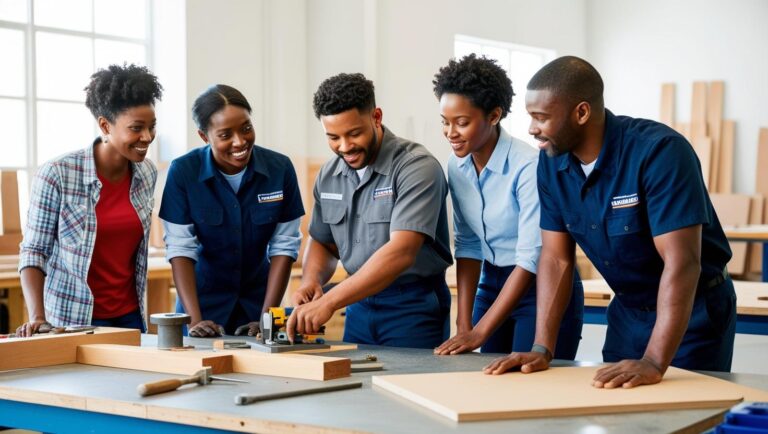3 Costly Mistakes Businesses Make with Their SETA Submissions (And How to Avoid Them)
Submitting your Workplace Skills Plan (WSP) and Annual Training Report (ATR) can feel like a tedious compliance task, especially for small businesses juggling limited resources and endless operational demands. But here’s the reality: when done correctly, your WSP/ATR is much more than a box-ticking exercise. It’s your gateway to tangible benefits, including discretionary grants, training support, and recognition for investing in your team.
Yet, many small businesses and new Skills Development Facilitators (SDFs) unintentionally sabotage their own success. Simple, avoidable mistakes cost companies time, money, and credibility with SETAs. The good news is that these pitfalls can be easily avoided with awareness, planning, and a strategic approach.
Let’s explore the three most common mistakes businesses make with their SETA submissions, why they’re so costly, and how to submit smarter for maximum benefit.
Mistake 1: Submitting Late — or to the Wrong SETA
It sounds obvious, but submitting your WSP/ATR late is one of the fastest ways to undermine your entire submission. Every SETA has its own deadlines, often around the end of April, but these can vary. Some SETAs close submissions earlier, and if you miss the cut-off, there’s no flexibility.
The consequences of submitting late—or worse, submitting to the wrong SETA—are severe. Your submission may be automatically disqualified, leaving you ineligible for discretionary grants and blocking any chance to reclaim a portion of your Skills Development Levy (SDL). Beyond the financial loss, it sends the wrong signal about your business’s commitment to skills development.
The fix is simple but requires discipline. Confirm your SETA early, based on your SIC code or primary business activity, and ensure your SDF is registered on the portal. Check the official submission timelines and then set your own internal deadlines at least two weeks before the SETA cut-off. This buffer gives you time to review documents, collect evidence, and make corrections if needed.
For example, imagine a small manufacturing company that waited until the last week of April to submit. They discovered that one of their staff members wasn’t listed on the portal, and their WSP was incomplete. By the time they fixed it, the deadline had passed, costing them eligibility for a discretionary grant they had been counting on.
The takeaway? Early preparation is not optional—it’s essential. Setting reminders, cross-checking your SETA registration, and confirming your submission window can save both money and stress.
Mistake 2: Only Reporting Accredited Training
Many SDFs operate under the misconception that only training linked to a registered qualification counts. This is a critical error that leads to underreporting the real development happening in your business. The truth is, informal and on-the-job learning can be just as valuable—and just as reportable—as formal, accredited training.
Informal training includes on-the-job demonstrations, peer coaching, mentorship, internal workshops, SOP reviews, and micro-learning such as short videos or screen-share tutorials. Even short, unaccredited sessions where staff gain practical skills are eligible for inclusion in your WSP/ATR.
Why does this matter? If you only include formal courses, you risk underrepresenting the investment your business is making in its people. SETAs are looking for evidence of real growth, not just certificates. They want to see that staff development is happening, that learning opportunities are intentional, and that skills are improving operational outcomes.
Consider a small retail business where the floor supervisor conducts daily 10-minute coaching sessions with staff on product knowledge and customer service techniques. These aren’t accredited courses, but they have a measurable impact on performance. Documenting attendance, capturing reflections, or keeping screenshots of shared materials transforms informal sessions into reportable, credible entries in your WSP/ATR.
By broadening your scope beyond formal courses, you maximize the value of your submission and better showcase your team’s growth. This approach is especially beneficial for small businesses, where much of the most impactful learning occurs on the floor, in the warehouse, or at the point of sale.
Mistake 3: Copying Last Year’s Training Plan
Rushing to meet the WSP/ATR deadline often tempts SDFs to recycle last year’s training plan. While it may seem efficient, this practice is one of the most damaging mistakes you can make. Repeating a previous year’s plan signals to SETAs that you aren’t actively tracking progress or adapting to changing business needs.
It also weakens your case for discretionary grant funding. Grants are intended to support businesses that are intentional about skills development aligned to operational goals. If your plan hasn’t changed since last year, it suggests stagnation, even if your team has evolved significantly.
A copied plan disconnects training from reality. Business priorities shift, technologies change, and staff roles evolve. A static plan doesn’t reflect the dynamic nature of your business, and SETA reviewers notice.
Avoid this mistake by starting with a simple skills audit. Ask key questions: What does the team need to do better or differently this year? Which new systems, technologies, or processes require learning interventions? Which employees are ready for upskilling or leadership development? This keeps your plan grounded in reality, making it credible, strategic, and fundable.
For instance, a logistics company expanding into e-commerce realized that last year’s training focused entirely on warehouse management. This year, new priorities required digital marketing, online order fulfillment, and customer service skills. By revising the plan to reflect these shifts, the business aligned its training to growth objectives and secured discretionary funding to support these initiatives.
Bonus Mistake: No Proof = No Points
Even when your training is robust, failing to document evidence is a critical oversight. SETAs need proof that learning occurred, whether it was formal, informal, or on-the-job. No documentation means no recognition, no points, and no access to grants.
You don’t need elaborate reporting systems. Organized, simple, and consistent records are sufficient. Evidence can take many forms, including signed registers, training logs, internal emails, screenshots of online sessions, certificates (where available), and even short reflections or manager notes.
A practical approach is to maintain a living training file throughout the year rather than scrambling in April. For example, a small hospitality business could create a folder on a shared drive, where every internal coaching session, SOP walkthrough, and micro-learning activity is logged with date, participants, and proof. When submission time comes, the WSP/ATR can be populated quickly with credible evidence.
Even casual mentoring, job shadowing, or team huddles that include learning moments can be recognized if you capture the activity and its outcome. Think of documentation as translating daily growth into measurable results for SETA reviewers.
Real-World Examples
Consider a small manufacturing business with ten employees. Their SDF ensures every training session—formal or informal—is tracked. When a new employee shadows the production line for a week, the supervisor logs attendance, notes observed skill acquisition, and captures a short reflection from the trainee.
Similarly, internal workshops on safety procedures are photographed, attendance lists maintained, and follow-up quizzes conducted. At submission time, this business presents a WSP/ATR that tells a clear story: a business committed to growth, operational improvement, and strategic skills development.
Contrast this with a company that submits late, reports only formal accredited training, and copies last year’s plan. Their submission may appear compliant on paper, but it lacks substance and credibility, and discretionary grants are often denied.
How to Avoid These Mistakes
The key to avoiding costly errors in your SETA submission lies in proactive planning, awareness of SETA requirements, and intentional documentation.
Start by confirming your SETA and understanding its deadlines. Build a calendar that accounts for preparation, review, and submission buffer time. Next, expand your training reporting beyond accredited courses. Recognize the value of informal learning and ensure every development opportunity is logged. Finally, resist the temptation to recycle old plans. Conduct a skills audit, align training to business objectives, and show clear progression year over year.
Think of your WSP/ATR as your company’s skills development story. The stronger, clearer, and more credible the narrative, the more benefits your business can access—from discretionary grants to enhanced credibility in the market.
Final Thoughts
Submitting a WSP/ATR is not just about compliance; it’s an opportunity to showcase your business’s commitment to developing talent. Avoiding the three major mistakes—submitting late, reporting only accredited training, and copying last year’s plan—can save you money, time, and lost opportunities.
Documenting proof throughout the year transforms your everyday training activities into a credible submission that works for you, not against you. By planning strategically, reporting comprehensively, and aligning training to real business needs, your small business can access grants, strengthen its team, and demonstrate a culture of growth and accountability.
In short, treat your WSP/ATR as a growth tool rather than a formality, and you’ll unlock the true value of skills development, even on a tight budget or within a small team.



